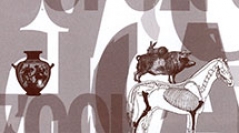

 Anthropozoologica
47 (1) - Pages 177-222
Anthropozoologica
47 (1) - Pages 177-222Are snakes thirsty? What do they drink? On both questions, ancient sources give contrasting responses, which sometimes apply to all Ophidians, sometimes only to some species. On the one hand, snakes were considered cold animals, so that they did not need to drink much, a deduction confirmed by the observation of captive specimens; in particular, this is Aristotle’s view. On the other hand, poisonous snakes, especially the Viperidae, were thought to be rather warm and dry, because they are more virulent in the summer and because their venom makes one thirsty ; so they were more easily than others described as thirsty or wine lovers, in so far as wine was also considered hot and dry. Another thirsty snake is the giant python snake of Indian and Ethiopian borders, supposed to attack the elephants in order to bleed them to death like a leech. Through these cases, the paper studies how reflections on the krasis of the different species of Ophidians developed in Antiquity from a disparate stock of legends, mythical representations and valid observations.
Physiology, Composition, Crasis, Toxicology, Epistemology, Legends, Wine, Blood, Giant Snakes, Vampire.